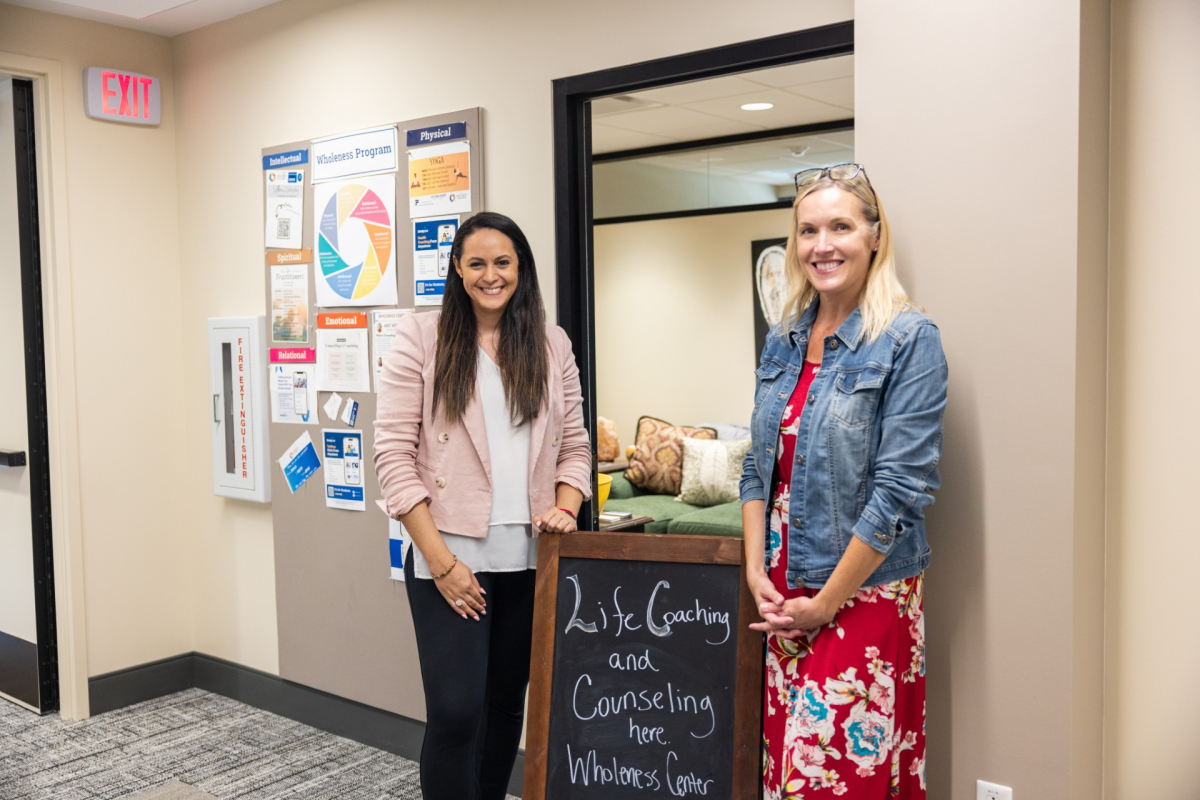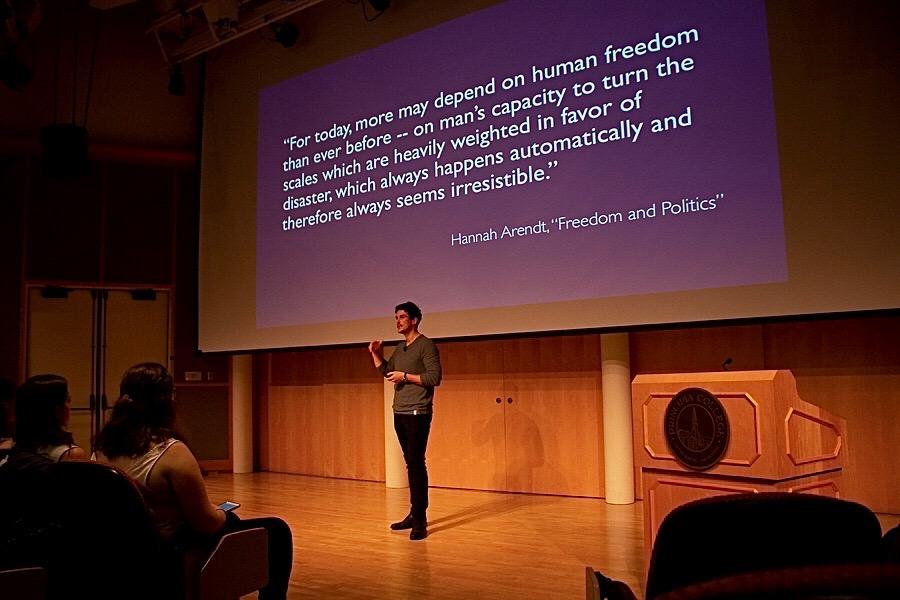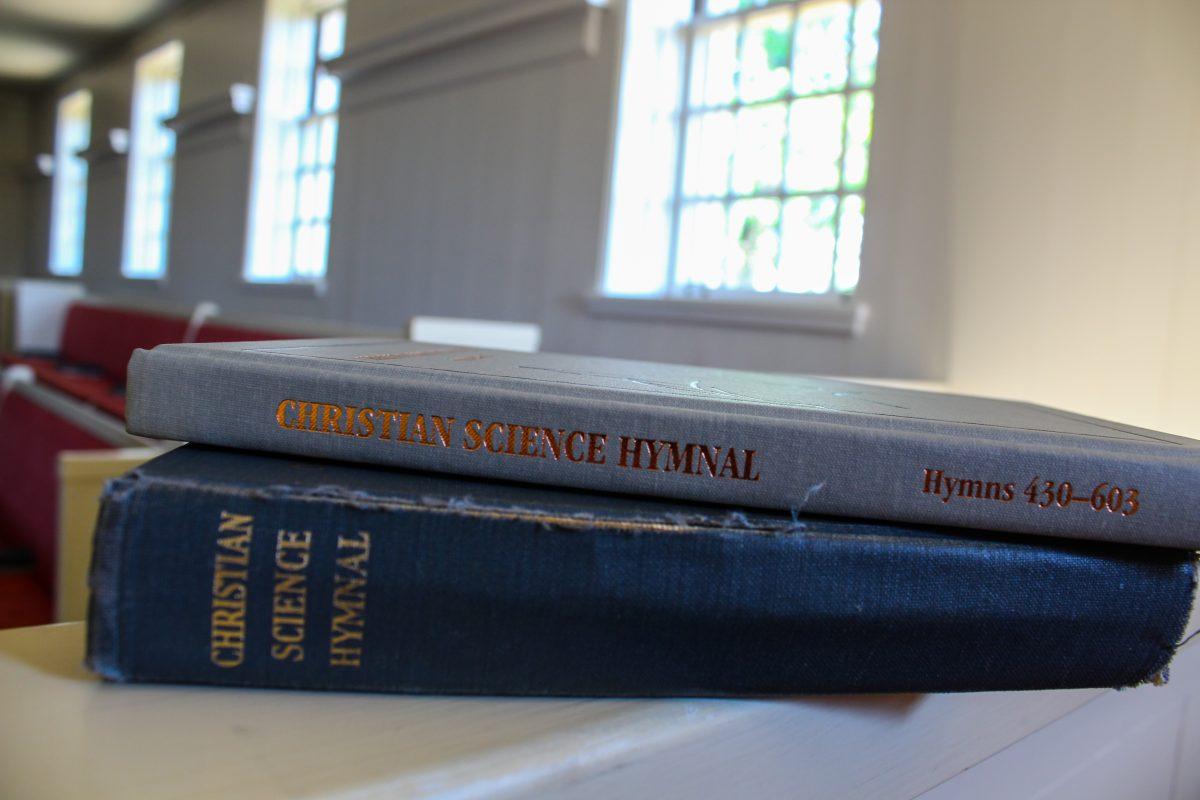This winter, a new visiting professor brings her expertise and oddly-shaped hats to Voney Art Studio. Kristin Serafini (C’98) is teaching drawing classes and helping out in the art department. Serafini is an artist who loves her field for the creative side of it as well as the logical aspect of drawing. She enjoys playing with spontaneous ideas in an orderly way.
Serafini is back at Principia College teaching simply because she loves to learn. She likes thinking about the process that makes art possible and helping students put together practices that work for them.
“Lately, in my own experience, I’ve faced several daunting moments that have reminded me of Daniel being thrown into the lions’ den,” Serafini explained in an email. “So far, with each obstacle I still find myself able to come back to the canvas with a clearer sense of what I’m meant to do. This repeated returning to purpose highlights something that is of paramount importance to me when working with the art students at Principia College.”
While she is here, she hopes not only to help students develop and refine creative processes, but also to help her students practice “defending the spaces where that development can happen.”
She explained that there will always be reasons to give up or to take the easy way out, but she wants her students to learn how to ask the big questions and then work to find answers.
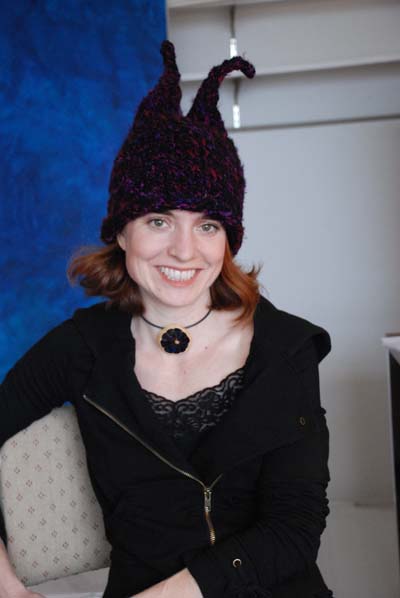
After Serafini graduated from Principia College in 1998, she continued working as an environmental children’s book illustrator — a love that had started at Principia Upper School. In 2007 she decided to go to graduate school — however, she never made it there. The same day that she got the program’s rejection letter, she also received a phone call from The Christian Science Publishing Society inviting her to work with them to illustrate five board books of Bible passages for preschoolers. She illustrated the Lord’s Prayer, Psalms 193, Psalms 23, the 10 Commandments, and the Beatitudes, and said that the last project was her favorite.
“I really connected with Jesus as perhaps the ultimate example of a great teacher,” Serafini wrote in an email. “When I read the Sermon on the Mount, I imagined him leading a review session. Each beatitude reminded me of a healing from the gospels; the disciples had already seen the proof of how these ideas worked ‘out in the field’.”
This process also helped her to reach deeper into her own work and connect with art on a more significant level.
“I used to think the purpose of my art was to illustrate or communicate, but these days, my paintings have become a form of prayer,” she wrote. “With every new canvas comes the opportunity to lay down my cherished ideas of what I think or hope will happen, and to submit to a process or power that is bigger than I can imagine.”
Art professor Danne Rhaesa heard about Serafini long before the two met. Rhaesa was in Costa Rica with her late colleague, Rachel Crandell, a longtime second grade teacher at the Lower School who was planning to write a book including Serafini’s illustrations. The book, titled The Forever Forest, was published less than a year later.
“That told me a lot about Kristin,” said Rhaesa in an email. “She’s a woman of action. Her activism for the environment runs deep and her devotion to a task plunges even more deeply.”
The Forever Forest was not Serafini’s first book about the environment and threatened habitats of countries going through global development. She has raised awareness among children and adults about the amazing species that inhabit our globe.
“I believe her type of activism, enriching our lives through exposure and information, through education, is the most effective activism,” wrote Rhaesa. “I admire the drive and faith she exhibits as she works against apathy and ignorance about her subjects and their nearly lost dwelling places.”
Rhaesa didn’t meet Serafini until fall quarter of 2009, when she gave a lecture about creative process to Rhaesa’s Enviromental Imagination class. It was then that Rhaesa first observed Serafini’s skills as a teacher.
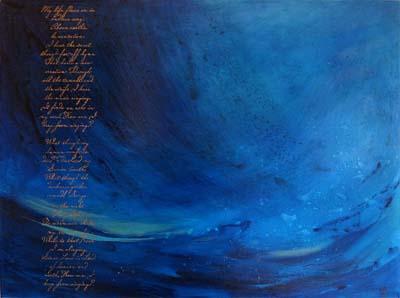
“She answered the hardest questions openly and shared some of the gritty insights into the challenges of working under deadlines, trying to get information that just wasn’t easily accessible,” Rhaesa explained. “Her standards are extremely high. You can depend on her to deliver the absolute correct information about her subjects. Even in her illustrations, she researches to confidently depict the right type of food, elevation, and, backdrop for her subjects.”
Serafini is dedicated to accuracy both in the classroom and in her professional work. When Rhaesa found out about the chance for a visiting art professor during winter quarter, she immediately thought of Serafini’s lecture and recommended her.
Art professor David Coughtry has been impressed by Serafini’s work ever since he taught her as a student. He described her work as “highly illustrative and individually stylistic.”
Serafini would describe her creative process as expressive and exploratory. She enjoys working with paints. She said in a phone interview, “I work mainly with acrylics and graphite these days – often both on the same canvas. I enjoy the versatility of acrylic paint, since sometimes it can be made to act like watercolors, and sometimes like oils, and most of the time it doesn’t take too long to wear off my hands after I’ve finished a painting.”
When Serafini was a student here, she drew several illustrations of animal eyes that now hang in the Science Center.
“I remember being blown away watching her in her student days create the eye series of colored-pencil drawings now hanging in the Science Center halls,” said Coughtry. “She wailed with those pencils, bearing down unmercifully, her hand all a-blur, creating one drawing a day, alongside everything else to be done.”
Coughtry has used a few of Serafini’s books in his classes to teach by example. He says that she is able to “elegantly [weave] human interest stories with scientific data … and creating rich visuals that exhibit inspired thought and meticulous care.”
Coughtry said he is eager to have Serafini here this quarter. Though this is her first time teaching college students, her youth helps her connect with students.
“She is intelligent and bright,” said Coughtry, adding that students will “benefit greatly” from her teaching.


